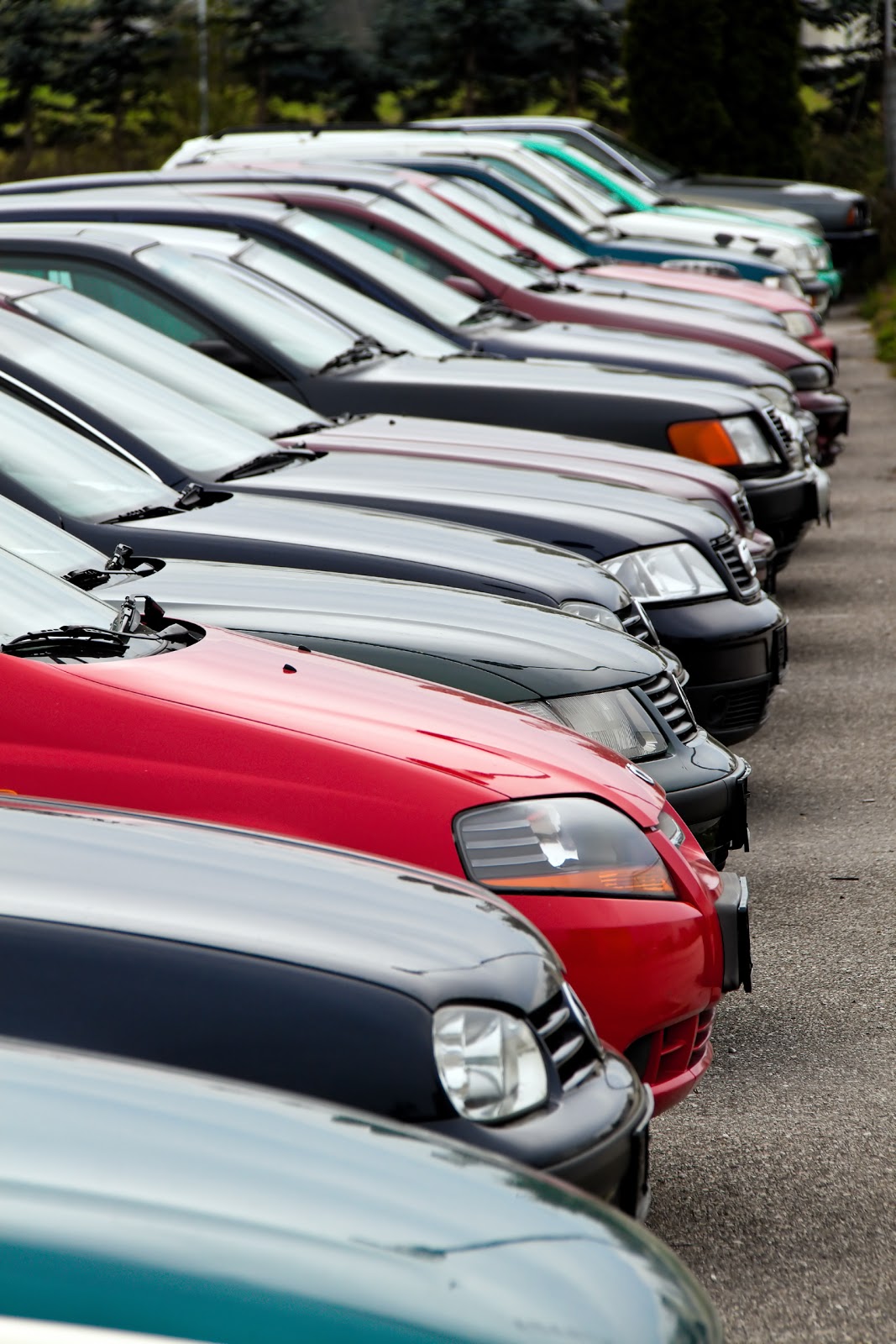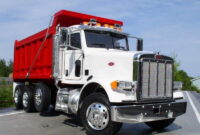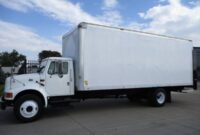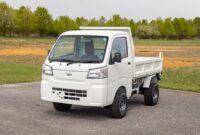Used Bed Covers For Trucks: A Comprehensive Guide to Smart Savings and Enhanced Utility pickup.truckstrend.com
Trucks are more than just vehicles; they’re workhorses, adventure companions, and vital tools for countless individuals and businesses. Protecting their cargo, enhancing their aerodynamics, and securing their contents are paramount concerns for any truck owner. While a brand-new truck bed cover offers pristine condition and a full warranty, the savvy truck owner often looks to the robust market of used bed covers for trucks. This guide delves into everything you need to know about navigating this market, ensuring you make an informed decision that provides maximum value without compromising on functionality.
Why Choose a Used Bed Cover? The Smart, Sustainable Choice
Used Bed Covers For Trucks: A Comprehensive Guide to Smart Savings and Enhanced Utility
Opting for a used truck bed cover isn’t just about saving money, though that’s undoubtedly a significant advantage. It’s a decision rooted in practicality, environmental consciousness, and often, immediate gratification.
- Significant Cost Savings: New truck bed covers can range from a few hundred to over a thousand dollars, depending on the type, brand, and features. A used cover can often be acquired for 30-70% less than its new counterpart, freeing up funds for other truck accessories or necessities.
- Environmental Responsibility: Purchasing used items contributes to the circular economy by extending the product’s lifespan and reducing waste. It’s a small but meaningful step towards a more sustainable lifestyle.
- Immediate Availability: Unlike ordering new, which might involve shipping delays, a used cover from a local seller can often be picked up and installed the same day, providing instant protection and utility.
- Trial and Error: For those unsure about which type of cover best suits their needs, a used cover offers an affordable way to test different styles before committing to a more expensive new purchase.
Understanding the Landscape: Types of Truck Bed Covers and Used Considerations

The market offers a diverse range of truck bed covers, each with its own advantages and considerations when bought used. Knowing these types will help you narrow down your search and inspect potential purchases effectively.
- Soft Roll-Up Covers: These are typically the most affordable new and even more so used. They consist of a vinyl or canvas material that rolls up to the cab.
- Used Considerations: Inspect for tears, punctures, fading, and brittleness in the fabric. Check the integrity of the Velcro or snap closures and the rails for bends or damage.

- Soft Folding (Tri-Fold) Covers: These covers are usually made of vinyl or canvas stretched over an aluminum frame, folding into two or three sections.
- Used Considerations: Look for damage to the vinyl/canvas, inspect the hinges for corrosion or damage, and ensure the latches or clamps function smoothly and are not missing.
- Hard Folding Covers (Tri-Fold, Quad-Fold): Constructed from aluminum, fiberglass, or composite panels, these offer greater security and durability than soft covers. They fold up in sections.
- Used Considerations: Crucially check for dents, cracks, or deep scratches on the panels. Inspect hinges for rust or binding, and ensure all locking mechanisms and clamps are present and fully operational. Verify the rubber seals are intact and pliable.
- Retractable Covers: These covers slide into a canister at the front of the truck bed, often made from aluminum, polycarbonate, or fiberglass slats. They offer excellent security and a sleek look.
- Used Considerations: This type requires the most thorough inspection. Check the smooth operation of the retraction mechanism – any sticking or grinding indicates issues. Inspect the canister for damage and ensure the drainage tubes are present and clear. Verify the integrity of the slats (no bends or severe damage) and the locking mechanism. Missing keys can be a problem.
- Hinged/One-Piece (Tonneau) Covers: These hard covers lift open from the tailgate end, providing full access to the bed. They are often color-matched to the truck.
- Used Considerations: Look for cracks, chips, or severe scratches on the fiberglass or ABS plastic. Inspect the hinges for rust or damage, and ensure the gas struts (which assist in opening) are still functional. Check the weather seal around the perimeter and the locking mechanism. Due to their size, shipping or transporting these used can be challenging.

Where to Find Your Next Used Truck Bed Cover
The hunt for a used bed cover can be an exciting treasure hunt. Knowing where to look will significantly improve your chances of finding the perfect fit.
- Online Marketplaces:
- Facebook Marketplace/Groups: Excellent for local finds, allowing for easy communication and inspection. Search for truck-specific groups in your area.
- Craigslist: Another strong contender for local listings. Be wary of scams and always meet in a safe, public place.
- eBay: Good for a wider selection, but factor in shipping costs, which can be substantial for larger items. Be sure to check seller ratings and detailed descriptions.
- Truck Accessory Forums/Groups: Many online truck communities have "for sale" sections where members sell parts. These often provide good details and a more knowledgeable buyer/seller base.
- Local Options:
- Salvage Yards/Junkyards: While often focused on engine parts, some salvage yards might have trucks with intact bed covers. Inspection is crucial here.
- Used Truck Accessory Shops: Some shops specialize in used parts or take trade-ins.
- Flea Markets/Swap Meets: Hit or miss, but occasionally you can find a good deal.
- Word-of-Mouth: Let friends, family, and local mechanics know you’re looking. Someone might be upgrading or getting rid of a compatible cover.
The Critical Inspection: What to Look For Before Buying
This is perhaps the most important step. A thorough inspection can save you from buyer’s remorse and unexpected repair costs.
- Compatibility: Confirm the cover is designed for your truck’s make, model, year, and bed length. This is non-negotiable. Ask for photos of the seller’s truck if possible.
- Material Condition:
- Soft Covers: Check for tears, punctures, excessive fading, or brittleness in the vinyl/canvas. Run your hand over it to feel for weak spots.
- Hard Covers: Look for significant cracks, deep scratches, or dents. Minor cosmetic blemishes are often acceptable for a used item, but structural damage is a red flag.
- Frame and Rails: Inspect the aluminum or steel rails that attach to the truck bed for bends, cracks, or severe rust. Ensure they are straight and undamaged.
- Hinges and Moving Parts: For folding and retractable covers, thoroughly inspect hinges for rust, binding, or play. For retractable covers, ensure the retraction mechanism operates smoothly without excessive force or noise.
- Latches, Locks, and Clamps: Verify that all locking mechanisms work correctly and that keys are provided if necessary. Ensure all clamps or fasteners that secure the cover to the bed are present and functional. Missing or broken clamps can be difficult and costly to replace.
- Seals and Weatherstripping: The rubber or foam seals around the perimeter of the cover are crucial for keeping water out. Check for cracks, tears, or hardening that could compromise their effectiveness.
- Drainage (for Retractable/Hard Covers): Some hard folding and most retractable covers have drainage tubes to channel water away. Ensure these are present and not clogged.
- Mounting Hardware: Confirm that all necessary mounting hardware (clamps, bolts, shims, brackets) is included. Missing specific parts can be a real headache to source.
Installation Tips for Your Used Bed Cover
Most truck bed covers are designed for relatively straightforward DIY installation, typically involving clamp-on systems.
- Clean Your Bed Rails: Before installation, thoroughly clean the top of your truck’s bed rails where the cover will sit. This ensures a good seal and proper adhesion for any weatherstripping.
- Gather Tools: Most installations require basic hand tools: a wrench or socket set, a tape measure, and sometimes a screwdriver.
- Follow Instructions (If Available): If the seller has the original installation manual, that’s a huge bonus. Otherwise, search online for the specific brand and model’s installation guide or watch YouTube tutorials.
- Enlist Help: For larger or heavier covers (especially hard folding or one-piece), having a second person makes alignment and lifting much easier and safer.
- Check Alignment and Seal: After installation, close the tailgate and inspect the cover’s alignment. Ensure it sits squarely on the bed rails and that the seals make full contact all around. Adjust clamps as needed for a snug fit.
- Test for Leaks: A simple garden hose test can identify any immediate leaks. If water gets in, re-adjust the cover and check the seals.
Maintenance and Longevity for Your Used Investment
Even a used cover can last for years with proper care.
- Regular Cleaning: Wash the cover with mild soap and water regularly, especially after off-roading or exposure to salt.
- Protect Soft Covers: Use UV protectants on vinyl/canvas covers to prevent fading and cracking.
- Lubricate Moving Parts: Apply silicone spray to hinges, latches, and the retraction mechanism (for retractable covers) to ensure smooth operation.
- Inspect Seals: Periodically check the weather seals for wear and tear. Replace them if they are cracked or hardened to maintain watertightness.
- Hardware Check: Tighten mounting clamps and bolts as needed, especially after the first few weeks of use.
Potential Challenges and Solutions
Buying used isn’t without its potential pitfalls, but many common issues have straightforward solutions.
- Missing Parts: This is common. Check online retailers, the manufacturer’s website, or truck accessory shops for replacement clamps, brackets, or keys. Sometimes, generic hardware can suffice.
- Minor Damage: Small tears in soft covers can often be patched with vinyl repair kits. Minor cracks in hard covers can sometimes be repaired with specialized epoxy or fiberglass repair kits, though aesthetic results vary.
- Fit Issues: If a cover is advertised for your truck but doesn’t quite sit right, check for warped bed rails on your truck or try adjusting the clamps. Sometimes, shims can help compensate for minor inconsistencies.
- No Warranty: Unlike new covers, used ones typically come without a warranty. This reinforces the importance of a thorough pre-purchase inspection.
Estimated Price Guide for Used Truck Bed Covers
Please note: These are estimated price ranges and can vary significantly based on the cover’s brand, condition, features, age, and your geographical location. New prices are provided for comparison to highlight potential savings.
| Type of Cover | New Price Range (Est.) | Used Price Range (Est.) | Key Used Considerations |
|---|---|---|---|
| Soft Roll-Up | $180 – $400 | $50 – $200 | Fabric condition (tears, fading), rail integrity, Velcro/snaps |
| Soft Folding | $250 – $550 | $80 – $250 | Fabric condition, hinge function, latch/clamp presence |
| Hard Folding | $600 – $1,200 | $200 – $600 | Panel damage (dents, cracks), hinge rust, locking mechanism, seals |
| Retractable | $900 – $2,000+ | $300 – $900 | Smooth retraction, canister damage, drainage, slat integrity, keys |
| Hinged/One-Piece | $700 – $1,500+ | $200 – $700 | Surface cracks/chips, hinge function, gas struts, lock, seals |
Frequently Asked Questions (FAQ) About Used Bed Covers For Trucks
Q1: Can I put a used bed cover designed for one truck model on a different truck model?
A1: Generally, no. Truck bed covers are specific to the truck’s make, model, year, and bed length. Even slight variations in bed rail design or dimensions will prevent a proper fit and seal. Always verify compatibility.
Q2: What’s the most common issue to watch out for when buying a used cover?
A2: Missing or damaged mounting hardware and worn-out weather seals are very common. These can often be replaced, but factor the cost and effort into your decision. For hard covers, issues with hinges or locking mechanisms are also frequent.
Q3: Are used bed covers still waterproof?
A3: A well-maintained used cover with intact seals should still be highly water-resistant, if not fully waterproof. However, older or poorly maintained covers may have compromised seals, leading to leaks. Inspect the seals thoroughly and perform a water test after installation.
Q4: How can I be sure the used cover will fit my truck?
A4: Get the exact make, model, year, and bed length of the truck the cover came off. Then, compare it to your truck’s specifications. Many online resources and manufacturer websites provide fitment guides. Ideally, measure your truck bed and compare it to the cover’s dimensions.
Q5: Is it worth buying a used cover with minor damage, like a small tear or dent?
A5: It depends on the price and your tolerance for aesthetics. Small tears in soft covers can often be patched, and minor dents on hard covers might just be cosmetic. If the damage doesn’t compromise functionality or security and the price reflects it, it might be a good deal. Avoid anything with structural damage.
Q6: What tools will I likely need for installation?
A6: Most clamp-on covers require basic hand tools: a wrench or socket set (often 1/2" or 9/16"), and sometimes a Phillips head screwdriver or Allen wrench. A tape measure is useful for alignment.
Conclusion
Investing in a used bed cover for your truck is a smart, economical, and environmentally conscious decision that offers significant benefits. By understanding the different types of covers, knowing where to search, and performing a meticulous pre-purchase inspection, you can secure a high-quality accessory that provides years of protection, security, and enhanced aesthetics for your truck. While the used market requires a bit more diligence, the rewards—substantial savings and immediate utility—make it a journey well worth taking. Protect your cargo, improve your fuel efficiency, and elevate your truck’s appearance, all while being a savvy consumer.



